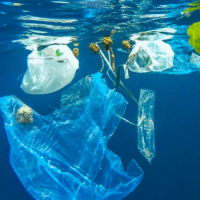March 1, 2021
The Canadian government has a lot on its plate – one of those things should not be illegally caught seafood
Estimated reading time: 0 minutes
BY: Sayara Thurston
Topics: Stop Seafood Fraud
Originally appeared in The Hill Times.
Most Canadians likely believe that pirates and slaves on the high seas are things of the past. The truth is, however, that both remain pervasive in the global fishing industry. And these are only a few of many issues in global fishing supply chains. Pirate fishing, officially known as Illegal, Unregulated and Unreported (IUU) fishing is a widespread problem around the globe, causing serious harm to wild fish populations, human rights, consumers and honest fishers.
Here in Canada, most of the seafood we eat is imported and most of what we catch is exported, and our seafood supply chains are complex and opaque. As a result, illegal fishing is costing Canada hundreds of millions of dollars each year, depleting already declining fish populations and implicating Canadian seafood consumers in a global web of illicit fishing practices that include modern slavery, where men are kept at sea on fishing vessels against their will, often for years.
The best – and proven – policy solution to these complex problems and to keep illegal products out of our supply chains is for the federal government to implement boat-to-plate traceability. This means following products throughout the supply chain with key information such as where, when and how a fish was caught. This practice also has the added benefit of reducing rates of seafood fraud and mislabelling, as well as addressing food safety issues. A nationwide Oceana Canada investigation found that 47 per cent of seafood samples in restaurants and grocery stores were mislabelled.
The federal government committed to creating such a system in 2019, yet as we’ve turned the corner into 2021, no timeline or clear plan has been put in place for doing so, leaving Canadian grocery store shelves open to products of illegal fishing for the foreseeable future.
A recent study led by economists at the University of British Columbia and commissioned by Oceana Canada found that Canada is losing up to $93.8 million in tax revenue each year due to illicit seafood trade and legitimate Canadian fishers are losing up to $379 million a year in potential revenue. And Canadians are unwittingly spending up to $160 million a year on seafood caught through IUU fishing.
Boat-to-plate traceability is increasingly considered a best practice in global seafood industries, and some of Canada’s largest trading partners have had these systems in place for years, including the United States and the European Union, the world’s largest seafood market. Another major seafood market, Japan, passed similar legislation just weeks ago. Canada can learn from these systems and take advantage of new technologies and recent innovations. Traceability exists in other supply chains – we know its benefits, and we know it can be done.
Canada’s current policies only require that products be traced one step forward and one step back in the supply chain. A recent EU report found, however, that “one step forward, one step back” traceability is ineffective for verifying products quickly and cannot function as a framework that ensures both food safety and legality.
What’s more, outdated labelling requirements mean that when you buy a bag of frozen fish fillets labelled “Product of the USA,” they may actually have been caught in China or Vietnam. Our rules only stipulate that products be labelled with the last place they were processed, not their original point of catch. This is how we end up with bags of frozen salmon marketed as “Wild Caught Pacific Salmon” but with “Product of China” written in smaller print on the back.
In 2021, Canadians expect – and deserve – to know that the fish they’re buying from their local seafood counter is safe, legally caught and honestly labelled, and isn’t a product of horrific fishing practices. By failing to act swiftly to implement stronger regulations in our seafood supply chain to trace where products are coming from, we are allowing these problems to persist at great harm to our economy and to the health of our oceans.
The government has acknowledged many of these issues. Fisheries and Oceans Canada has provided funding to initiatives like Global Fishing Watch, which uses data from fishing vessels and satellite images to fight illegal fishing on a global scale. The Canadian Food Inspection Agency has increased its use of DNA testing to target pervasive mislabelling of seafood products in Canadian grocery stores and restaurants. However, until Canada implements a mandatory boat-to-plate traceability system, these tools will not be effective in tackling illegal fishing and seafood fraud. Bringing food safety requirements and safeguards against illegal fishing together isn’t a simple task, but it is a feasible one. Boat-to-plate traceability is the missing piece of the puzzle.
Ninety-five per cent of Canadians who eat seafood support the government’s commitment to implement a boat-to-plate traceability system, and 85 per cent would be more confident purchasing seafood if product labels included where, when and how seafood was caught.
It’s time for the government to do the right thing for human rights around the world and human livelihoods right here in Canada by acting on its commitment and put boat-to-plate traceability in place in Canada in 2021.
Sayara Thurston is the seafood fraud campaigner at Oceana Canada.
MOST RECENT
March 6, 2025
February 3, 2025
January 22, 2025
Celebrating New Beginnings in 2025: Four Right Whale Calves Spotted Off Florida Coast

